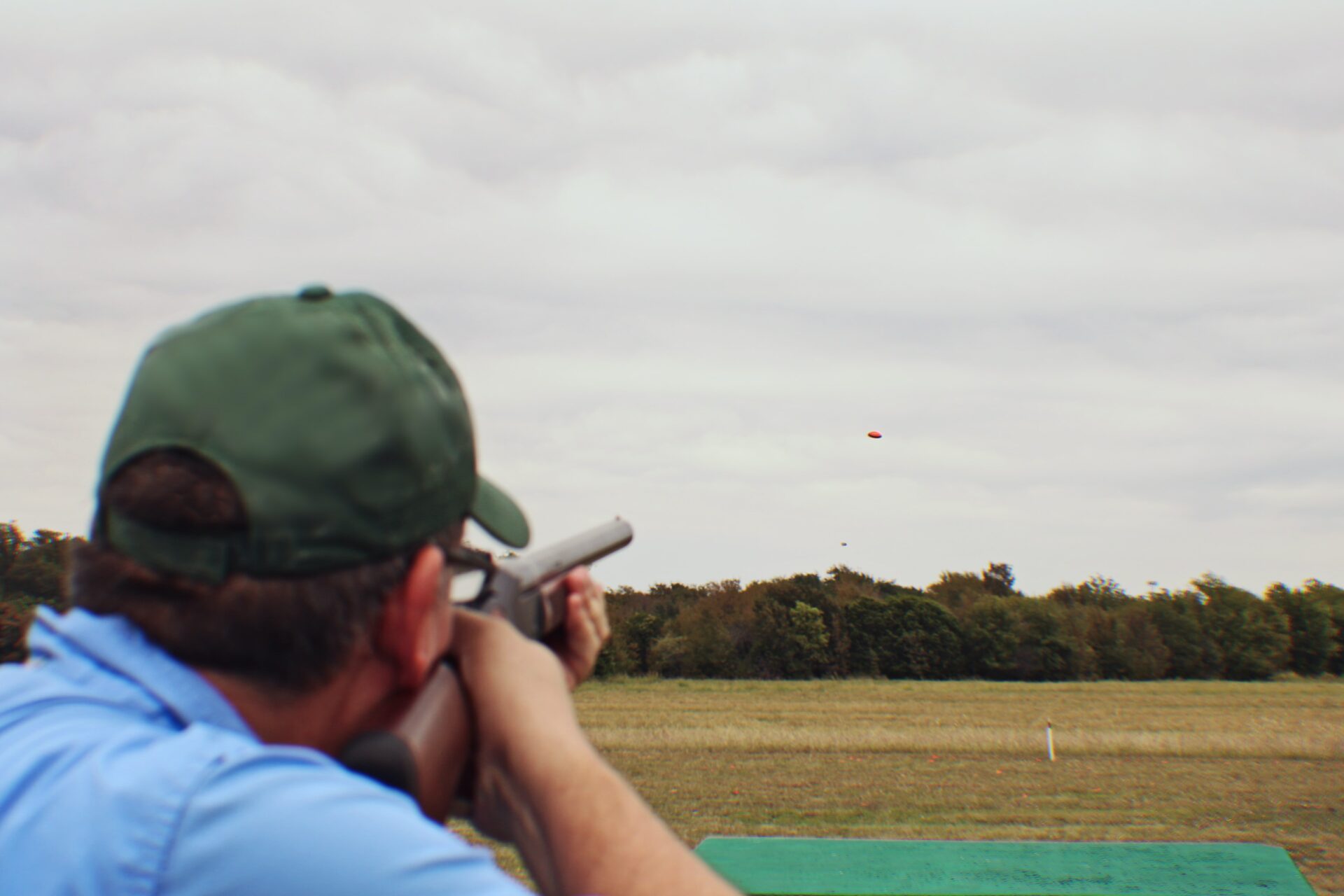I can’t shoot that clay, the tree is in the way”, states my bewildered student.
“What tree?”, I question.
“That tree! The one in the middle of the field,” he exclaims. Again, I question him, “What tree?” At this point, he has a look on his face that can best be described as annoyingly perplexed.
I mean, how could I NOT see the willow oak in the middle of station 7?!
I totally saw the tree, but it doesn’t register when you’re shooting, at least it shouldn’t.
Things like trees, poles, towers, etc. can be a visual block for a lot of shooters. They shouldn’t be though since the clay is constantly moving and that movement is rarely erratic to the point that it does 180 behind the object.
Someone once told me about a particular shot at a course up north that has a presentation where there is a clay that flies through an old shell of a building. The windows of that building to be exact. That presentation sounds amazing!
Back to the tree. So, when a shooter is faced with an “obstacle” in the field, they need to remember that the gray matter above their ears is truly remarkable. This is also a great case for why, if you can, you need to shoot with both eyes open.
When the clay approached the willow oak, it caused the student to feel rushed, like they had to hurry up and shoot before the clay flew behind the tree. The trap setter had set the target up so that it reached the tree at just about the half-way point in its flight.
It was a softly falling, average speed crossing bird that showed a good portion of the top half of the clay. In other words, your basic crossing bird on any given course and on any given day. The setter utilized the tree in the middle of the field to fluster the shooters. Kudos to the trap setter.
Why did I keep impressing upon my student that I didn’t see a tree? Because, if you are focused in on the bird, with a clear plan on how to execute a successful shot, the tree will literally disappear. Yes, the bird will technically disappear for a moment behind the tree but, when shooting with both eyes open, you are able to maintain a continuous flight line on the bird.
Do NOT let that tree affect your swing and make you hit the brakes mid-swing. This does take practice and once you get used to not paying attention to those “obstacles”, your game will improve even more.
What about trees in the background? This time of year, all the green makes it difficult to see your bird unless it’s a closer presentation. If the trap setter has set it to throw the black bottom to you, it’s impossible to see until the clay breaks the top of the tree line and gets up into the sky. So, don’t bother.
If you’re dealing with a higher bird and it is invisible until it hits the open sky, then set your hold point in that open sky. You never want to set your hold point close to the trap or in the heavy shadows. Your visual acquisition of the clay will be fraught with jerky movements and a feeling of being left behind. You will have to race to catch up to the bird and by the time you catch up it will be too late.
Now, for the main reason I LOVE trees in sporting clays. They make an excellent reference point for the trajectory of the bird. Planes, clouds and birds have a nasty tendency to move off, but I have yet to have a tree walk off the field. Pay close attention how the bird will cut in front of a particular branch or pop up over a certain treetop. If you have selected a great hold point (which is 95% of your success) and matched that up with a “reference point” such as a particular tree limb, you will crush every one of those clays! Provided all other movements in your swing are maintained and you don’t allow yourself to get too cocky about it.
The next time you are in the box, take a moment to truly mark your bird. Pay attention to the branch or limb that it flies past when you first can really see the bird. Use that reference point and establish an excellent hold point. Be sure to bring a friend or family or even an arborist the next time you head to the clay course and share the sport with the next generation.
Kate Ahnstrom, owner of Virginia Shooting Sports is a certified, professional instructor of the Paragon School of Sporting, pro staff Syren/Caesar Guerini, resident pro Orapax Hunting Preserve, Artemis ambassador for Va, and field staff member of the Sisterhood of the Outdoors. Her tireless dedication to her students’ success is obvious in each and every lesson.



